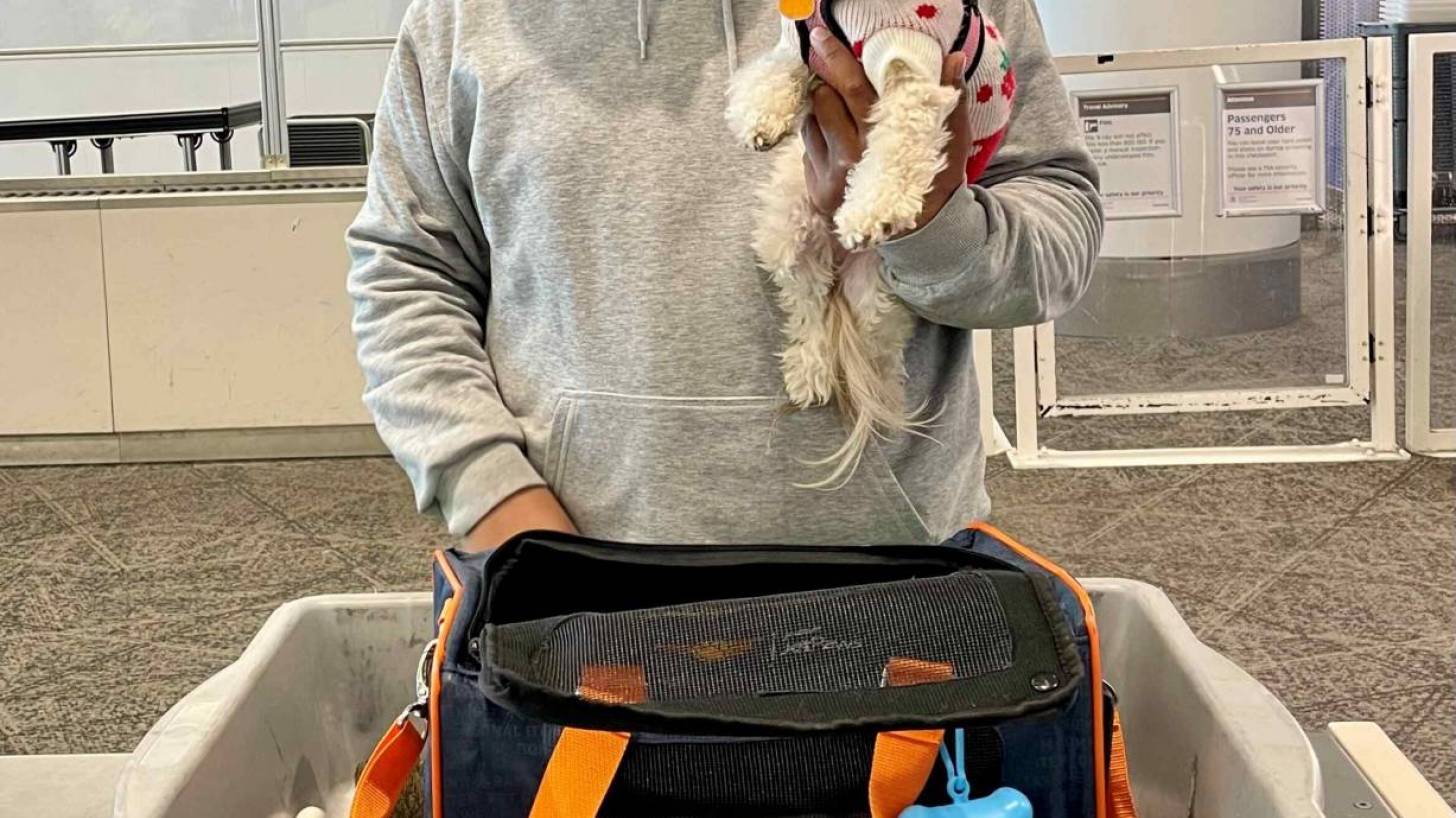Pets Don't Pass Through X-ray Security

Traveling through an airport security checkpoint in the U.S. with a pet can be easy when travelers know what to expect, says the Transportation Security Administration (TSA).
However, never place a pet in the X-ray tunnel.
The X-ray at the security checkpoint only screens passengers' personal property and carry-on luggage.
"Pets often travel with their humans and are thought of like family members," says Scott T. Johnson, TSA Federal Security Director for the airport, in a media statement on February 24, 2023.
"That's why it's important that if a passenger is traveling with their pet to become familiar with the security procedures for pets and how to go through the checkpoint security screening process together quickly and easily."
"Key in screening pets is to know that they should never be screened through a checkpoint X-ray unit."
Preparing for a pet to be screened is simple when these easy steps are followed:
- All pets should be brought to a security checkpoint in a hand-held travel carrier.
- Remove the pet from the carrier just before the beginning of the screening process.
- Place the empty travel carrier on the checkpoint conveyor belt to be X-rayed.
- If possible, carry the pet through the walk-through metal detector during the screening process.
- Alternatively, a pet can walk through the screening process if the owner has the pet on a leash. Best to listen to the guidance that a TSA officer is providing.
After the screening, owners should return their pet to the travel carrier at the re-composure area away from the security checkpoint.
This location helps ensure the pets and other passengers' safety.
Pet travel restrictions vary by airline and airport, so checking with the air carrier before traveling with a pet is essential.
For example, to enter Texas and comply with its state law, all dogs and cats 12 weeks of age or older must be vaccinated against rabies and accompanied by a rabies vaccination certificate.
For entry purposes only, dogs and cats traveling into Texas may be inoculated against rabies with killed, modified live, or recombinant vaccine.
Once in Texas, compliance must be achieved if a USDA-approved vaccine was not used or the veterinarian who administered it was not licensed to practice veterinary medicine in the U.S.
For entry into Texas, the following criteria must be met:
- At the time of vaccination, the animal was at least the minimum age prescribed for the vaccine; and
- The time has elapsed since the most recent vaccination has not exceeded the recommended interval for the booster vaccination as established by the vaccine's manufacturer.
Additionally, 30 days must have lapsed since the initial vaccination to qualify as currently vaccinated in Texas.
Our Trust Standards: Medical Advisory Committee




